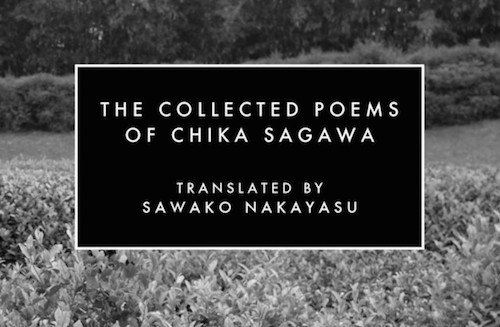The New Yorker Introduces Chika Sagawa (and Her Translators)

The New Yorker's Adrienne Raphel introduces the first full-length, English-language collection of Sagawa's poetry, translated by Sawako Nakayasu, to readers: The Collected Poems of Chika Sagawa (Canarium Books, 2015) (but of course our informed Harriet readers have been introduced already). In addition to delving into Sagawa's biography, the article also provides useful context about the conditions throughout her lifetime.
Sagawa Chika, born Kawasaki Ai in 1911, died of stomach cancer in 1936, before her twenty-fifth birthday. Even with such a brief career, she was one of the most innovative and prominent avant-garde poets in early-twentieth-century Japan. At the time, few women in Japan wrote poetry, and those who did typically used traditional forms to address domestic concerns. Sagawa sounded different: she wrote in free verse, not tanka or haiku, and her images were shockingly new. “A chef clutches a blue sky,” begins one of her many short, lyric poems, “Illusory Home.” “Four fingerprints are left; gradually / the chicken bleeds. Even here the sun is crushed.”
Not long after Sagawa’s death, drastic changes came to Japanese culture that more or less assured she would be all but forgotten. In the nineteen-thirties and forties, the country’s nationalist government promoted writers who used familiar Japanese forms, rather than those who wove Western influences into their work. An organization called the Tokubetsu Kōtō Keisatsu, sometimes referred to as the “Thought Police,” arrested intellectuals whose work was deemed unpatriotic. As a result, “virtually every avant-garde poet co-operated with the war effort,” John Solt writes, in “Shredding the Tapestry of Meaning,” his biography of another Japanese modernist, Kitasono Katue. “After the war, the younger poets were disillusioned with the modernists, some of whom had coöperated with the militarists, so they rejected all of that,” Eric Selland, a scholar and translator of Japanese poetry, explained to me.
For years, Sagawa—the pen name is written with the characters for “left” and “river,” likely an allusion to the left bank of the Seine—was barely read. But over the past decade, her work has enjoyed a revival among contemporary Japanese poets, and it has begun to appear in English. In 2011, the poet and translator Sawako Nakayasu produced “Mouth: Eats Color: Sagawa Chika Translations, Anti-Translations, & Originals,” a slim volume of loose, experimental riffs based on Sagawa’s poems. “The Collected Poems of Chika Sagawa,” translated by Nakayasu and published this past April by Canarium Books, is the first full-length English-language version of Sagawa’s work.
Learn more about modernism in Japan at The New Yorker.


